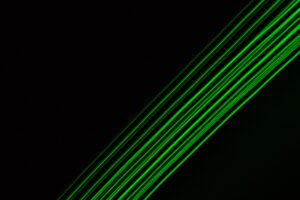Nowadays researchers develop a totally new type of laser system that allows the detection and killing of tumor cells from the outside of the shin. Thus, preventing cancer cells from spreading to other parts of the body through the blood. Despite the fact that this laser device is still far from becoming a commercial diagnostic tool, the laser systems demonstrate sensitivity of up to 1,000 times higher than traditional techniques used to find tumor cells in the blood.
Importance of the novel System development
It should be noted that generally blood samples are taken to test cancer spread. However, quite often these tests cannot detect tumor cells even if they are present in a single sample, particularly, in the early form of cancer. That is why the detection of the cell by a laser system plays a crucial role. It is often too late to make effective treatment of patients since cell detection was late.
The novel laser technology is a non-invasive method of cancer cell detection that enables the examination of larger quantities of blood with a greater level of sensitivity. Firstly, such a laser system was tested in the lab, then on animals, and recently brought to clinical trials in humans.
The principle of the laser technology operation is based on the use of light pulses produced by a laser beam on the outside of the skin to heat up cells in the blood. Herewith, the laser beam affects only melanoma cells — not healthy ones — because of a dark pigment (melanin) absorbing the light located in these cells. Also, the laser system uses an ultrasound technique for the detection of the teensy, tiny waves emitted by this heating effect.
Results of the newly developed Laser Systems
Thus, 28 light-skinned patients who had melanoma and 19 healthy volunteers who didn’t have melanoma tested the laser system technology. To be precise, doctors shone the laser beam onto the patients’ hands and detected that within 10 seconds to 60 minutes, the laser system could find cancer cells in 27 out of 28 cases.
The laser device didn’t demonstrate any false positives on the healthy patients, and the laser did not provoke safety concerns or side effects. Moreover, laser technology does not harm the skin where cells produce melanin naturally. The main reason for it depends on the laser beam light that affects a relatively large area on the skin, so it is not focused enough on the skin to damage these cells.
An additional benefit of the developed laser system includes fewer circulating tumor cells after the treatment, in spite of the fact that the researchers’ purpose was diagnosing rather than treating cancer, nevertheless, the laser beam seemed able to kill the cancer cells even at the low energy. The future aim of laser technology research is its development to identify circulating tumor cells released by cancers other than melanoma as well as in people with darker skin.
Optromix is a fast-growing fiber laser manufacturer and a vendor of optical fiber sensors and optical monitoring systems. The company offers fast turnkey solutions and creates sophisticated fiber laser systems for special purposes. Optromix uses only its own technologies and develops a broad variety of fiber lasers. If you have any questions or would like to buy a laser system, please contact us at info@optromix.com










